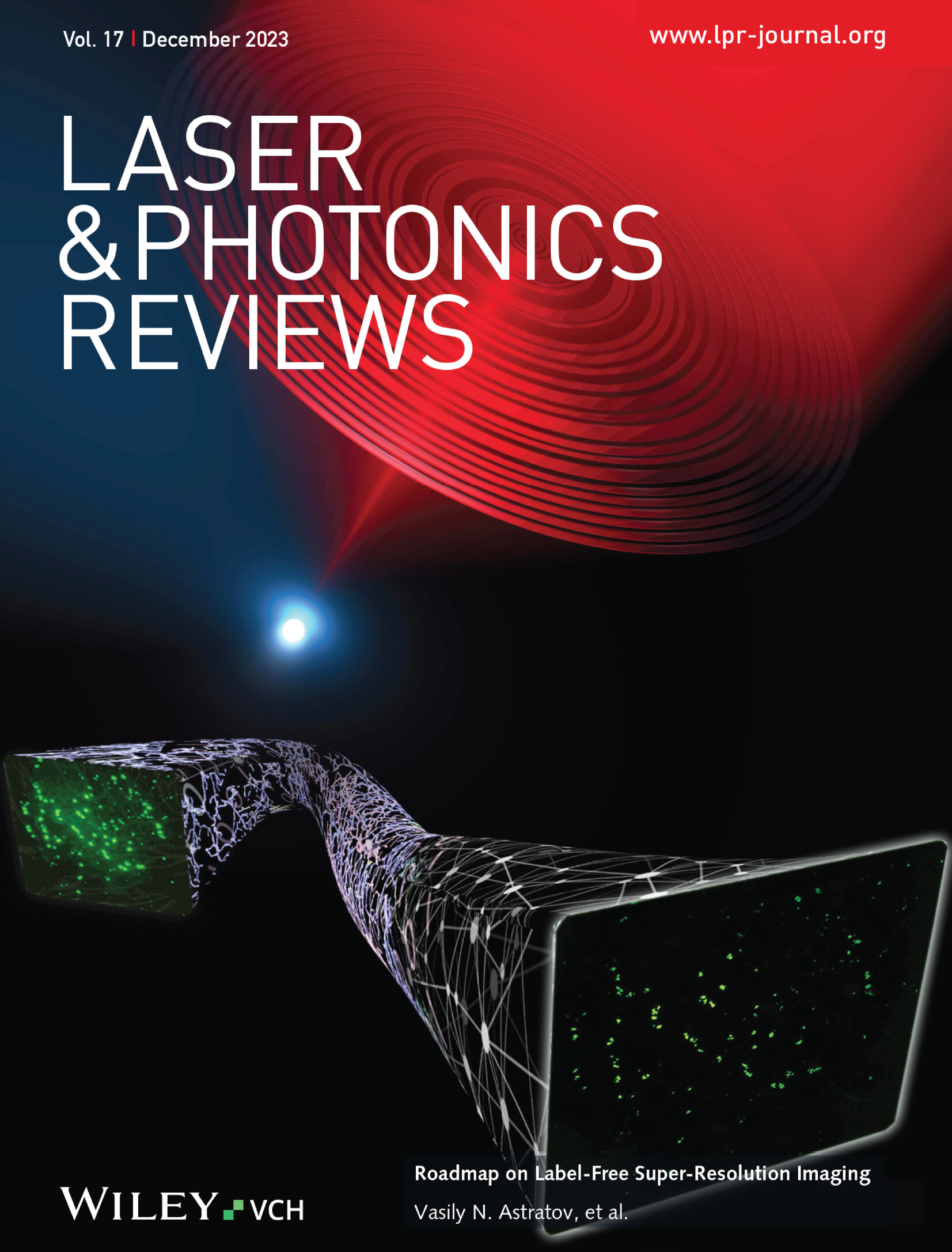Vertical Pyro‐Phototronic Effect and Lateral Photothermoelectric Effect in Perovskite Single Crystals‐Based Photodetector for Narrowband and Broadband Dual‐Modal Optical Communications
IF 9.8
1区 物理与天体物理
Q1 OPTICS
引用次数: 0
Abstract
Creating dual‐modal metal halide perovskite (MHP)‐based photodetectors (PDs) capable of working in either broadband or narrowband modes would enhance optical communication systems. However, challenges such as complex fabrication, and limited detection range (<900 nm) still exist. Herein, self‐powered, dual‐modal PDs‐based on MHPs are demonstrated, which integrate vertical interfacial pyro‐phototronic effect (IPPE) and lateral photothermoelectric effect (PTEE), via doping these crystals with Ag+ and integrating with wide spectrum absorber. The high‐performance narrowband photodetection results from vertical charge collection narrowing effect (CCN)‐assisted IPPE, enabling light with specific wavelength to penetrate into the interface, with high carrier separation efficiency and temperature rise. In lateral PD, broadband metamaterial absorbers as counter electrodes improved photothermal conversion and expanded light absorption, achieving ultra‐broadband responses from 360 to 2200 nm. By changing the halide type of the MHP single crystals (SCs), the specific response band of narrowband PD can be modulated from purple light to red light, while maintaining the wide spectrum response capability. The dual‐modal photodetection is fully used to achieve double encryption during signal transmission. The work offers a promising approach for designing multi‐modal PDs for wireless communication and data security, applicable in optical imaging, biomedical, and intelligent sensing.窄带和宽带双峰光通信中钙钛矿单晶光电探测器的垂直热光电子效应和横向光热电效应
创建能够在宽带或窄带模式下工作的基于金属卤化物过氧化物(MHP)的双模光电探测器(PD)将会增强光通信系统。然而,复杂的制造工艺和有限的探测范围(900 nm)等挑战依然存在。本文展示了基于 MHP 的自供电双模光电二极管,通过在这些晶体中掺杂 Ag+并与宽光谱吸收器集成,将垂直界面热释光效应(IPPE)和横向光热电效应(PTEE)融为一体。高性能窄带光电探测源于垂直电荷收集变窄效应(CCN)辅助的 IPPE,它使特定波长的光能够穿透界面,并具有较高的载流子分离效率和温升。在横向 PD 中,作为反电极的宽带超材料吸收器改善了光热转换并扩大了光吸收,实现了 360 纳米到 2200 纳米的超宽带响应。通过改变 MHP 单晶(SC)的卤化物类型,可将窄带光分辨的特定响应带从紫光调制为红光,同时保持宽光谱响应能力。在信号传输过程中,双模态光电探测被充分利用来实现双重加密。这项工作为设计用于无线通信和数据安全的多模态光电器件提供了一种前景广阔的方法,适用于光学成像、生物医学和智能传感领域。
本文章由计算机程序翻译,如有差异,请以英文原文为准。
求助全文
约1分钟内获得全文
求助全文
来源期刊
CiteScore
14.20
自引率
5.50%
发文量
314
审稿时长
2 months
期刊介绍:
Laser & Photonics Reviews is a reputable journal that publishes high-quality Reviews, original Research Articles, and Perspectives in the field of photonics and optics. It covers both theoretical and experimental aspects, including recent groundbreaking research, specific advancements, and innovative applications.
As evidence of its impact and recognition, Laser & Photonics Reviews boasts a remarkable 2022 Impact Factor of 11.0, according to the Journal Citation Reports from Clarivate Analytics (2023). Moreover, it holds impressive rankings in the InCites Journal Citation Reports: in 2021, it was ranked 6th out of 101 in the field of Optics, 15th out of 161 in Applied Physics, and 12th out of 69 in Condensed Matter Physics.
The journal uses the ISSN numbers 1863-8880 for print and 1863-8899 for online publications.

 求助内容:
求助内容: 应助结果提醒方式:
应助结果提醒方式:


